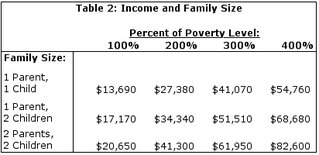22 Oct 2007 SCHIP’s Next Controversy: New “Ad” Tells Kids to Smoke
This mock ad appearing on You Tube will no doubt be controversial, but it makes an accurate point. The SCHIP expansion the Democratic leadership is fighting for is to be funded by smokers. There aren’t enough smokers now to fund the program.
Here’s more on the SCHIP/tobacco issue from David Hogberg’s paper for the National Center for Public Policy Research, SCHIP Expansion: Socialized Medicine on the Installment Plan:
FROM UNFAIR TO REGRESSIVE
The way in which the legislation reauthorizing SCHIP is written will undoubtedly makethe program into one that is regressive. But the fact is that SCHIP is already unfair; thus, the legislation currently before Congress would only worsen it.
SCHIP is unfair in the sense that, through SCHIP, the federal government gives proportionally more money to children who are not as poor as the children on Medicaid. As noted above, SCHIP is supposed to insure children for families that make too much money to qualify for Medicaid. Presumably, then, children on Medicaid are in families that are poorer than are children on SCHIP. Yet the federal government matches the dollars states spend on SCHIP at a proportionally higher rate than it does Medicaid. In 2006, states spent a total of about $132 billion on Medicaid, while the federal government matched that with $165 billion. That means, on average, the federal government spends 1.2 dollars on Medicaid for every one dollar the states spend. For that same year, states spent almost $2.4 billion on SCHIP and the federal government sent the states $4.8 billion in matching funds. Thus, the federal government spends two dollars on SCHIP for every one dollar the states spend. In short, the federal government spends proportionally more on the children in SCHIP than it does on the poorer children in Medicaid.
The legislation passed by Congress takes this unfair system and makes it regressive. First, much of the new funding for SCHIP comes from a large increase in the cigarette tax. As Table 1 shows, people with incomes under 200 percent of the poverty level smoke at rates higher than those with incomes above 200 percent of the poverty level.
Thus, the taxes to fund the expansion of SCHIP will fall disproportionately on those making under 200 percent of the federal poverty level.It could be argued that this is a fair system if all children in families under 200 percent of the poverty level were eligible for SCHIP and if only those under 200 percent of poverty were eligible for SCHIP. But none of this new revenue goes to those under 200 percent of the poverty level; benefits for those children are already funded via other taxes. The added revenues from the cigarette tax are for the purpose of funding the expansion. Indeed, both SCHIP bills passed by Congress take the tax revenues from those under 200 percent of the poverty level and gives it to those children who live in families above 200 percent of poverty, likely all the way up to 400 percent of the poverty level. Table 2 shows the income amount by family size for each poverty level.
It is not inconceivable that a parent with one child with an income of $13,690 will be funding benefits for two children in a family of four with an income of $82,600. In short, SCHIP expansion would result in families whose income puts them in the bottom 15 percent of households funding benefits for children who are in families close to the top 25 percent of households.It is quite common for the political left to attack a flat tax as regressive. SCHIP expansion is expected to impose not only a flat tax on cigarettes, but it then to take the revenue from that tax and distribute it up the income ladder. It seems clear the political left has an agenda other than basic fairness when it supports SCHIP expansion.
Read the rest here.
In many ways, the Congressional leadership is being dishonest about SCHIP. If this “ad” helps get people to think about how SCHIP is underfunded, then good job to whomever made it.
Addendum, 10/23/07: I received the following noteworthy letter in response to this post. I recommend clicking the link Dr. Belzer provides:
Nice video. 🙂
For the record, CBO does not reveal what it assumes about price elasticity in its estimate of the additional tax revenue from the increased tobacco tax. If CBO’s elasticity assumption is That means the forecast revenues may not be realized. Of course, paygo does not require that actual revenue increases offset actual spending increases.
I’ve blogged on the point myself. See:
http://neutralsource.org/content/blog/detail/925/
International comparisons based on PPP suggest that the price elasticity of tobacco rises with wealth. If that propensity also applies to tobacco consumers within the U.S., then the increased tobacco tax would be more regressive than Hogberg suggests because higher income consumers will be more inclined to reduce consumption.
Regards,
Richard Belzer PhD
Managing Editor
Neutral Source
On the web at http://neutralsource.org
_____
Labels: Congress, Government Health Care, Health Care, Liberals





